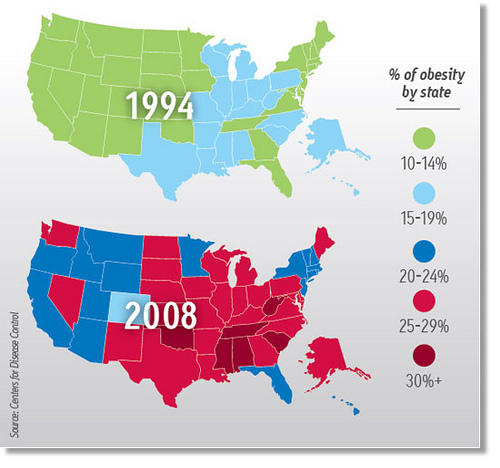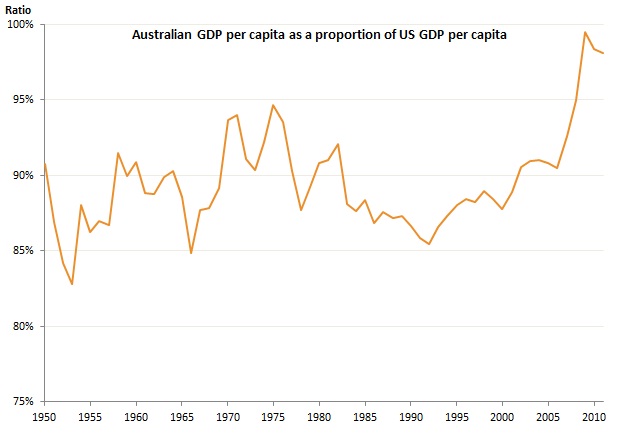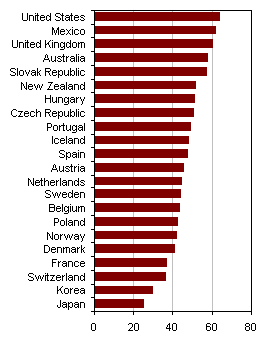From The Atlantic, on an article about unwalkable roads via Zero Hedge, I couldn’t go past this one for todays Chart:

And don’t worry Australia you’re not that far behind, with this chart linked within the article:
The original Atlantic articles premise (and shocking photos) was about how America’s infrastructure is positioned solely around the car, without provision for walking or bicycle tracks. I’m not sure if this experience is paralleled here in Australia from an urban planning point of view, but I know anecdotally that vehicles are not that accommodating of bicycles. Along with our empirically invalid rules on helmet wearing which discourages this healthy activity, explored by Rumplestatskin here at MacroBusiness previously, there are economic and environmental advantages to moving away from purely-motor vehicle based transport.
Obesity, like the changing demographic nature of Western countries, is a macroeconomic problem above the individual’s dilemma of a healthy lifestyle. But like a lot of other policy prescriptions – e.g a slavish devotion to neoclassical economics that suggests ideologically, not empirically, that going to a surplus whilst households are deleveraging is “sound” fiscal policy – I’m not sure the solution to the obesity epidemic lies in following the mainstream view, especially economics or indeed, mainstream dietary “science”.
As the conclusion from the study where the 2nd chart came from suggests, it is too complex a problem for mere economists to tackle:
Although economists have recently started exploring the economic causes and consequences of obesity, providing a solution to this problem may require a complex vision that incorporates more than economic incentives to help consumers eat healthier foods (such as providing mandatory nutritional food information, taxing food products with high levels of sugars, carbohydrates, and fats, or subsidizing certain fruits and vegetables for lower-income groups).
Given that both consumption and expenditure of calories matter, new health policies promoting more active lifestyles should be put forward by countries affected by the obesity epidemic. This would alleviate the symptoms of new sedentary lifestyles common to all industrialized countries.
It’s even more complicated than that, according to Rumplestatskin who said late last year:
I argued that health ‘sin taxes’ are generally ineffective at fulfilling their stated aims. If the taxes change behaviour and improve health, public health costs will actually increase as people live longer during retirement. But the taxes won’t change behaviour significantly. It will simply promote consumption of close substitutes, which themselves are likely to be ‘unhealthy’.
Update: just as I posted this, Matt Cowgill posted this comparative chart of US and Australian GDP per capita, which shows we are catching up fast. I wonder if there’s been much study into the effect of high GDP, inflation and private debt on obesity? Because it seems we are turning American, not Japanese.

